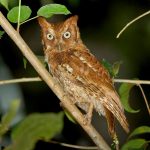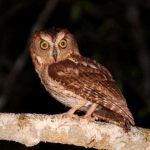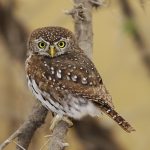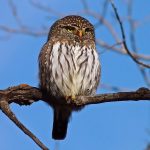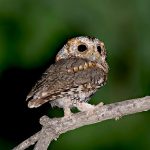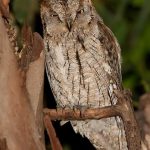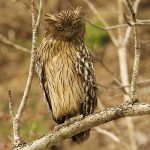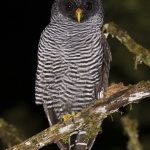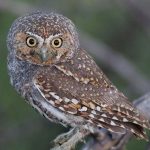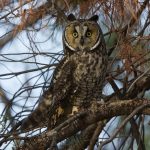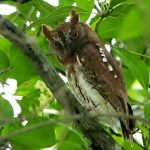Christmas hawk-owl
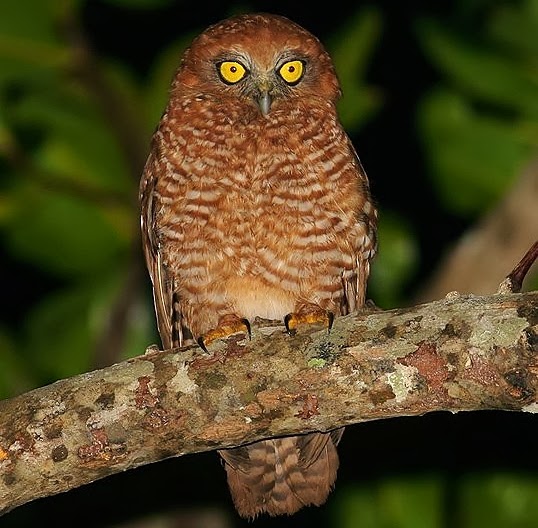
 |
| Photo by Cherry Wong (Oriental Bird Images) |
Common name:
Christmas hawk-owl (en); coruja-de-Natal (pt); ninoxe de Christmas (fr); nínox de la Navidad (es); weihnachtsinsel-buschkauz (de)
Taxonomy:
Order Strigiformes
Family Strigidae
Range:
This species is endemic to Christmas Island, in the Indian Ocean, where it is present throughout the island.
Size:
These birds are 26-29 cm long and weigh 160-200 g.
Habitat:
The Christmas hawk-owl is mostly found in tropical rainforest, but also use moist tropical scrublands.
Diet:
They are primarily insectivorous taking a wide range of medium and large sized insects such as Orthoptera, Lepidoptera and Coleoptera. They also hunt small vertebrates including geckos, black rats Rattus rattus and the Christmas white-eye Zosterops natalis.
Breeding:
Christmas hawk-owls can possibly breed all year round. They are monogamous and may mate for life. They nest in tree hollows without any lining, most often in Syzygium nervosum. The female lays 2 white eggs, which she incubates alone for about 1 month. The chicks are fed by both parents and fledge 68-77 days, but continue to depend on their parents for another 2-3 months.They reach sexual maturity at 1 year of age.
Conservation:
IUCN status – VU (Vulnerable)
This species has a small and restricted breeding range, and the global population is estimated at 820-1.200 individuals. The population has declined in the past, but it is likely stable at present as it appears to adapt fairly well to secondary habitats. The Christmas hawk-owl lost 25% of its native habitat through forest clearance for phosphate extraction, but this problem seems to be mostly halted at present. The yellow crazy ant Anoplolepis gracilipes was introduced in the 1990s and may prey directly on nestlings and alter island ecology. Pesticide abuse and nest predation by introduced black rats may be additional problems. Conservation measures underway include an agreement with the mining company to prevent clearance of primary rainforest, and a control programme for the A. gracilipes which successfully eliminated the ants in 95% of the area they occupied.
